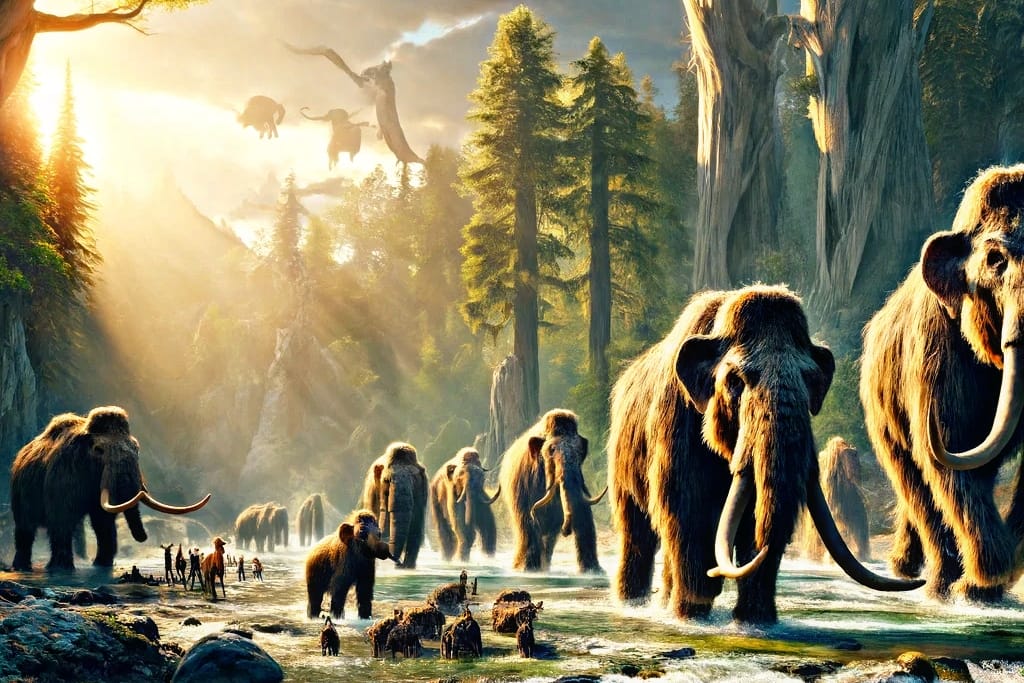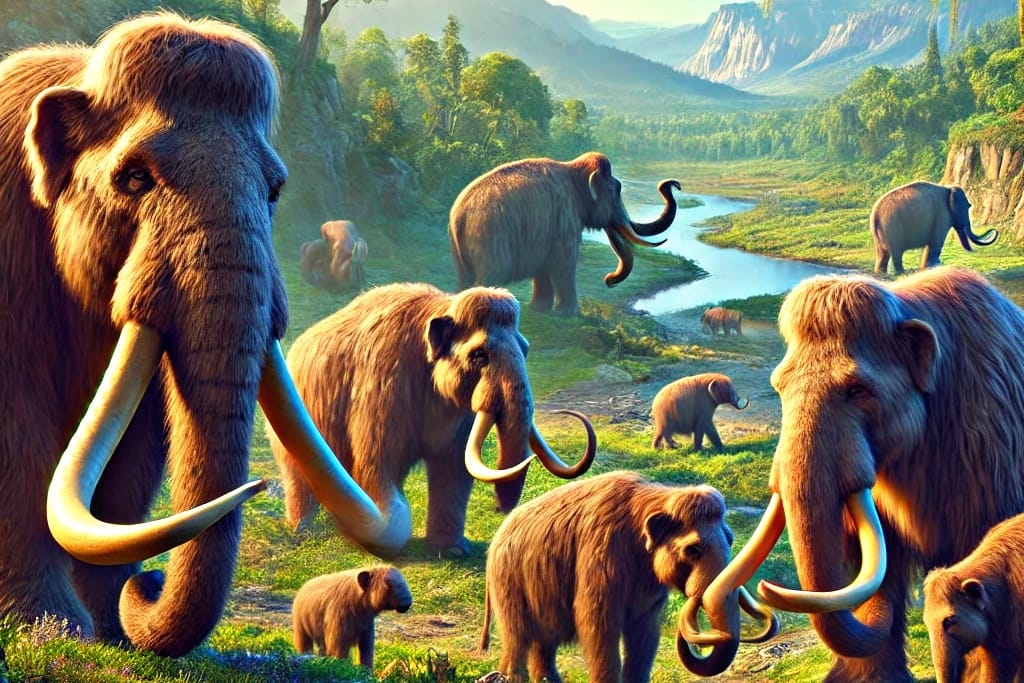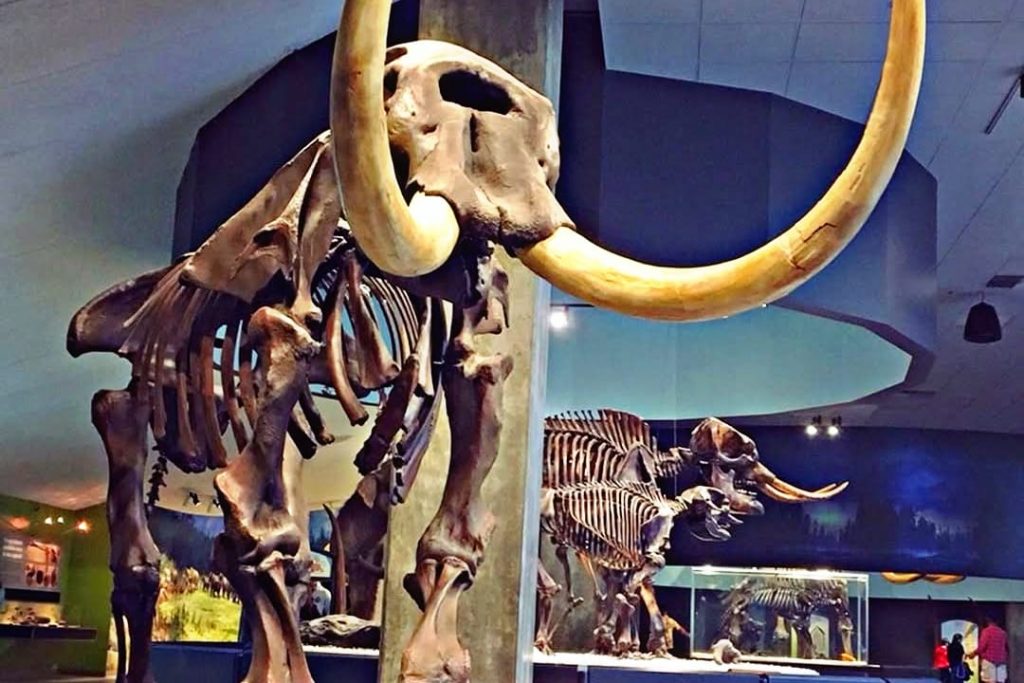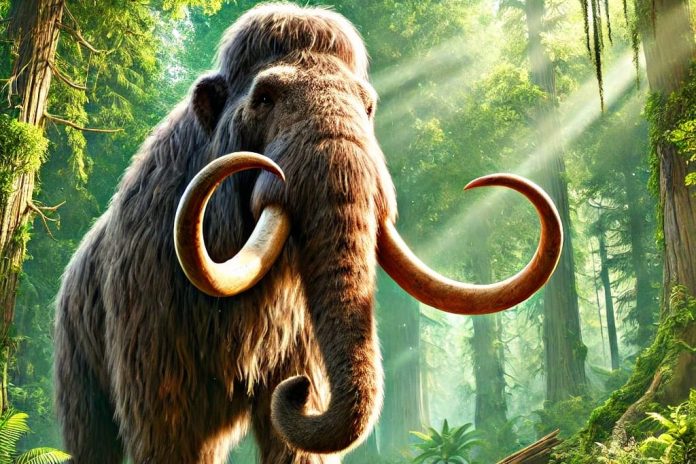Introduction: The mastodon, a massive, elephant-like creature, roamed the Earth millions of years ago. Often confused with the woolly mammoth, the mastodon was a distinct species of prehistoric mammal that flourished during the Pleistocene epoch. This guide aims to explore the fascinating world of the mastodon, from its physical characteristics and habitat to its eventual extinction. We will also delve into its significance in the study of paleontology and its place in popular culture.
What is a Mastodon?

A mastodon is an extinct genus of mammal belonging to the family Mammutidae, which is closely related to the modern elephant. The word “mastodon” comes from the Greek words “mastos,” meaning breast, and “odon,” meaning tooth, which refers to the distinctive conical teeth that are a hallmark of the species. Mastodons were part of a group of animals known as proboscideans, which also includes elephants and the mammoths.
Mastodons lived during the Pleistocene epoch, around 2.5 million to 10,000 years ago. They were herbivores and likely lived in forests, grazing on a diet of trees, shrubs, and other vegetation. The term “mastodon” is sometimes used interchangeably with “mammoth,” but these two creatures were different in many ways, including their physical appearance, behavior, and ecological niches.
Physical Characteristics of the Mastodon
Mastodons were massive animals, though not as large as some of the mammoths that shared their time period. On average, adult male mastodons stood about 9–10 feet (2.7–3 meters) tall at the shoulder and weighed between 4,000 and 6,000 kg (8,800 to 13,200 pounds). Their body structure was robust and stocky, built for strength rather than speed.
One of the most distinctive features of mastodons was their teeth. Unlike modern elephants, whose teeth are flat and designed for grinding grass, mastodons had conical teeth with prominent cusps, which made them well-suited for eating leaves, branches, and woody plants. These teeth were designed to shred and crush foliage rather than grind soft vegetation, indicating their preference for browsing on trees and shrubs.
The mastodon’s body was covered in a thick coat of fur, similar to the woolly mammoth, to protect it from cold climates. This adaptation was particularly important during the Ice Age, when much of the Northern Hemisphere was covered in glaciers and subjected to harsh weather conditions.
Mastodons also had long, curved tusks that were used for foraging, digging up vegetation, and perhaps even fighting. The tusks could grow up to 10 feet (3 meters) in length. These tusks were composed of ivory, a material highly prized by humans in prehistoric times for use in tools, art, and trade.
The Evolution of Mastodons

Mastodons evolved around 30 million years ago, during the late Eocene Epoch. They belong to a larger group of animals known as Proboscidea, which includes modern elephants, woolly mammoths, and other extinct relatives. The first mastodons were smaller, more elephant-like creatures that evolved over time into the larger, more distinct species we associate with the term “mastodon.”
The genus Mammut is the most well-known of the mastodons. Fossils of these creatures have been found in North America, Europe, Africa, and Asia, though the species became most prominent in North America. By the time the Ice Age began, mastodons had developed characteristics that were well suited to cold, forested environments.
Interestingly, there were multiple species of mastodons over time. Mammut americanum, the American mastodon, is the species most commonly associated with the prehistoric North American continent. Other species, such as the Eurasian mastodon (Mammut borsoni), lived in Europe and parts of Asia.
Habitat and Behavior
Mastodons were primarily forest dwellers, with large populations inhabiting areas of North America, Europe, and Asia during the Pleistocene. Unlike the grasslands preferred by woolly mammoths, mastodons lived in densely vegetated forests, where they could find ample food sources in the form of shrubs, twigs, and branches. Their browsing habits also suggest that they were more adept at navigating forests than open plains.
In terms of behavior, mastodons likely lived in small to medium-sized social groups, similar to modern-day elephants. These groups were likely matriarchal, with older females leading the herd. Male mastodons may have lived solitary lives or occasionally joined groups during mating seasons. Much of their behavior would have been dictated by the availability of food and the changing climate of the Ice Age.
The mastodon’s diet was varied, but it primarily consisted of trees and shrubs, which it would tear down with its tusks or rip apart with its trunk. The trees and branches provided essential nutrients and fiber, which the mastodon could digest with its specialized teeth. Fossil evidence suggests that mastodons were quite adaptable in terms of their diet, able to thrive in various types of vegetation-rich environments.
Extinction of the Mastodon

Like many other megafauna of the Ice Age, mastodons became extinct around 10,000 years ago. There are several theories as to why this massive species disappeared, though the exact cause remains a topic of debate among paleontologists.
Climate Change: One major factor that contributed to the extinction of the mastodon was the end of the Ice Age, which brought significant climate change. As the Earth warmed, the forests and shrublands that mastodons thrived in began to disappear, replaced by more open grasslands. This shift in habitat would have made it difficult for mastodons to find enough food, leading to a decline in their population.
Human Activity: Another contributing factor to the mastodon’s extinction may have been human hunting. As early humans spread across North America and other parts of the world, they likely hunted mastodons for food, ivory, and other resources. Evidence of mastodon hunting, including spear points found alongside fossilized remains, suggests that human activity may have played a role in the extinction of these creatures.
Combination of Factors: Most scientists today believe that the extinction of the mastodon was due to a combination of factors, including climate change, habitat loss, and overhunting. As the environment changed and human populations grew, the mastodon was no longer able to survive.
Mastodons vs. Mammoths: Key Differences
It’s common for people to confuse mastodons with mammoths, and while the two species share some similarities, they are distinct animals. Here are some key differences between mastodons and mammoths:
- Teeth: The most obvious difference between the two is in their teeth. Mastodons had conical, cusped teeth designed for browsing on trees and shrubs, while mammoths had flat, grinding teeth adapted for eating grass.
- Size and Shape: While both species were large, mammoths tended to be slightly larger than mastodons. Mammoths had a more slender body, while mastodons were stockier with shorter legs.
- Habitat: Mastodons preferred forested areas, while mammoths were typically associated with open grasslands and tundra.
- Tusks: While both species had large tusks, the tusks of the woolly mammoth were more spiral-shaped, while those of the mastodon were straighter.
Discoveries and Fossil Evidence

Mastodon fossils have been found all over the world, but the most famous remains come from North America, particularly the areas of the Great Lakes, the American Southwest, and Alaska. These fossils are important to scientists because they provide valuable insights into the paleoclimate, the behavior of mastodons, and their interactions with other species, including early humans.
One of the most significant discoveries of mastodon fossils occurred in 2005 in Michigan, where a well-preserved site containing multiple mastodon remains was uncovered. This discovery provided crucial information about the social structure and behavior of the mastodon, as the remains appeared to be from multiple individuals, suggesting the possibility of a mass death event.
Mastodons in Popular Culture
Mastodons, though long extinct, have captured the imagination of scientists, artists, and writers alike. Their imposing size and mysterious nature make them a compelling subject for stories about prehistoric life. They have appeared in various films, television series, and even video games, often depicted alongside other prehistoric creatures.
In addition, the mammoth, as a close relative of the mastodon, has become more iconic in popular culture, frequently appearing in art, mythology, and folklore. The discovery of a preserved woolly mammoth in Siberian ice has only fueled interest in the ancient relatives of today’s elephants.
The Mastodon and Modern Science
Mastodon fossils have provided invaluable data for scientists studying the evolution of elephants and other proboscideans. These fossils have allowed paleontologists to understand better how environmental changes, like the end of the Ice Age, affected the survival of large mammals. The study of mastodon fossils has also helped scientists refine the dating of prehistoric events and understand the migration patterns of animals in the Ice Age.
Conclusion
The mastodon, with its iconic tusks and conical teeth, was a fascinating creature that once roamed the forests and plains of prehistoric Earth. Though long extinct, its legacy continues to shape our understanding of ancient ecosystems and the megafauna that dominated the planet during the Ice Age. Through the study of mastodon fossils and their role in the larger ecosystem, we gain a deeper understanding of how species evolve and adapt to changing environments. Despite the mystery surrounding its extinction, the mastodon remains one of the most intriguing animals from Earth’s distant past.

